











| Old El Paso Cherie and I drove to El Paso to visit my cousins Nancy and Gary and to see my Uncle Hugh, who at the spry ol' ago of ninety could probably tell some stories about as old as the hills surrounding western Texas. |
 |
Texas Hospitality Cousins Gary and Nancy, and Uncle Hugh (left) were gracious Texas hosts to us rubes from rural Arizona, opening their hearts and home in the historic Manhattan Heights neighborhood to us. Sure, we were a bit leery when we crossed the state line and saw the sign proclaiming Texas as the "Proud Home of President George W. Bush," but hey, his days were numbered by the time we visited over the MLK weekend, so we cranked up the Dixie Chicks music and cruised into El Paso. |
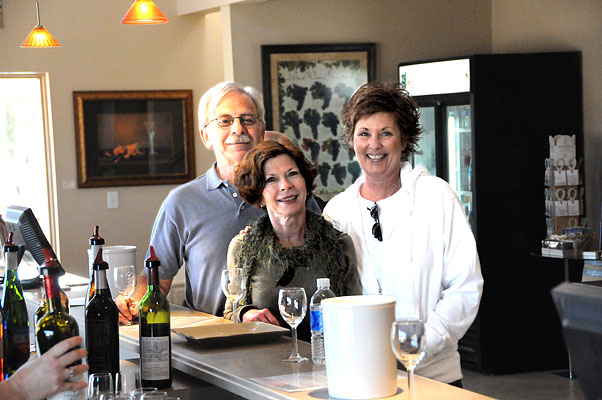 |
Gary took us on an all-day tour of El Paso, area wineries, Old Mesilla (Las Cruces, NM), White Sands National Monument, and a windshield tour of Fort Bliss. 'Twas a full day of fun, starting with Zin Valle Vineyard. |
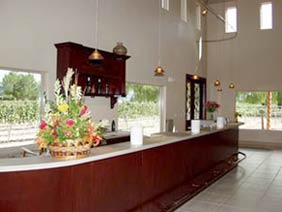 Zin Valle Vineyard is a nicely laid out vineyard and winery on the far, far west end of Texas. Though their property is in Texas, if you cross the street you're in New Mexico.
Zin Valle Vineyard is a nicely laid out vineyard and winery on the far, far west end of Texas. Though their property is in Texas, if you cross the street you're in New Mexico.Their tasting room is inviting, offering a lookout over some of their vines, but I must admit, their wine isn't up to Arizona standards. However, I bought an etched bottle of their 2005 Zinfandel (black bottle at right), if only for the etching of the star that shines on the Franklin Mountains overlooking El Paso. |
 |
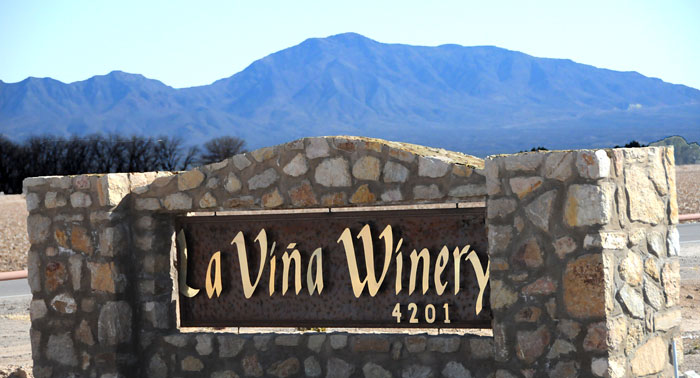 Down the road a piece, and still in the shadow of the Franklin Mountains, is the La Vina Winery, New Mexico's oldest winery. I think we were tuned up by then, 'cause Cherie liked just about every bottle in their repertoire. Me, I found the pourer an interesting conversationalist, as she and her husband had recently moved to Ft. Bliss, but the wines...well, they were a cut above the Zin Valle offerings. |
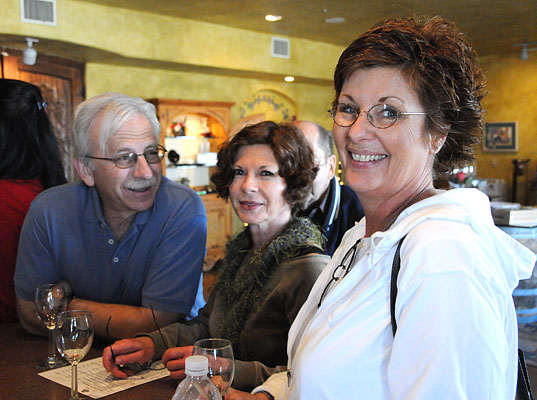 |
Gary is always ready for a good time... Nancy looks like she's partying in a Flapper-era speakeasy... and Cherie was enjoying the bonhomie, and wines, in the La Vina tasting room. What a wonderful start to a great day of sightseeing. |
After all that wine, it was time to repent, and we moved on to a short tour of historic churches in south-central New Mexico, starting with San Miguel Catholic Church on Hwy 28, built from lava rocks quarried nearby.  And on to Mesilla, New Mexico, an historic district south of Las Cruces, where the magestic San Albino Basillica stands at the head of the town square. Reminding us a bit of Tombstone, Arizona, Mesilla served as the capital of the Confederate Territory of Arizona in 1861-1862 during the Civil War, and was the hub for the entire region. During the "Wild West" era, Mesilla was known for its cantinas and festivals. The area attracted such figures as Pancho Villa, Billy the Kid, and Pat Garrett. The village was also the crossroads of two major stagecoach lines, Butterfield Stagecoach and the Santa Fe Trail. Today it abounds with shops selling arts and crafts, jewelry, and souvenirs, with the occasional watering hole thrown in for the tourists' refreshment. |
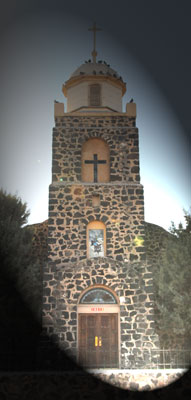 |
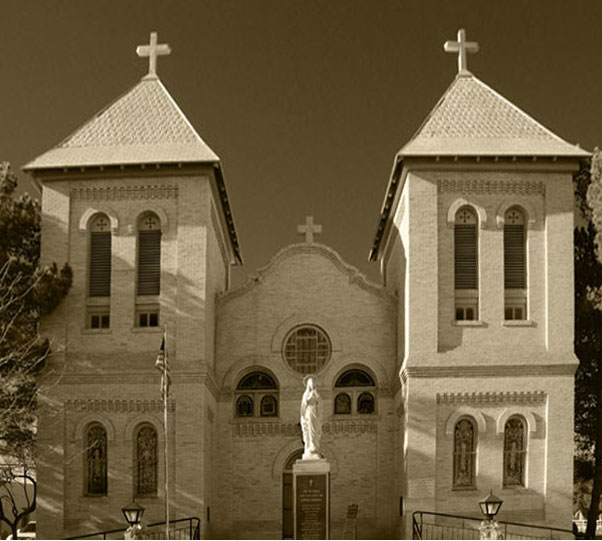
San Albino rises into the sky in La Mesilla, above... ...with the interior just as impressive, below. 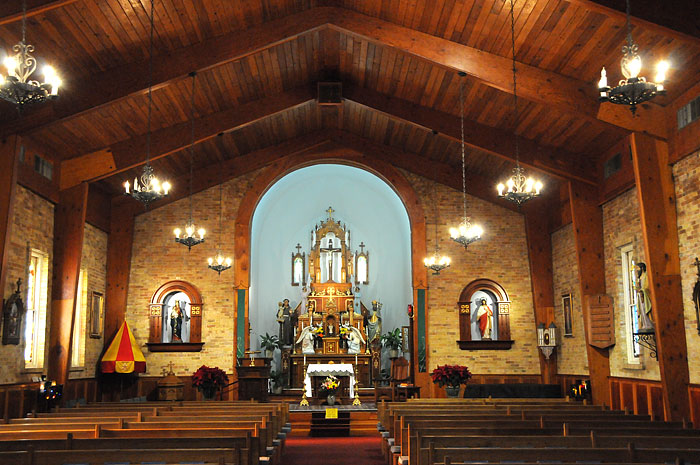 |
 |
As we learned in church, "let he who is without sin cast the first stone." Ah, but not in this shop, where the more appropriate saying would be "people who live in glass houses shouldn't throw stones." A glassworks shop displays its wares in its show window...providing a study in color and shapes. |
| The colorful homes in Mesilla provide a soft southwestern foreground for azure skies, and a backdrop for cacti and stunted shrubbery. | 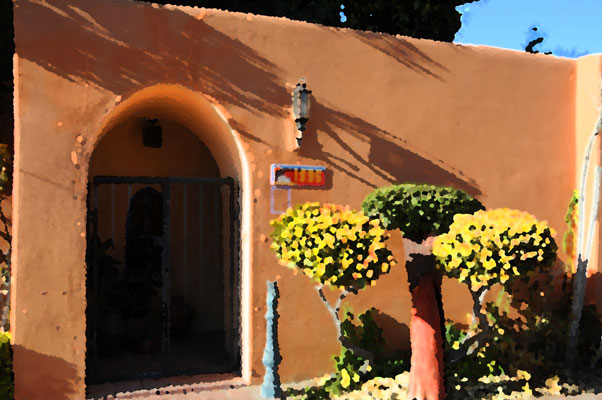 |
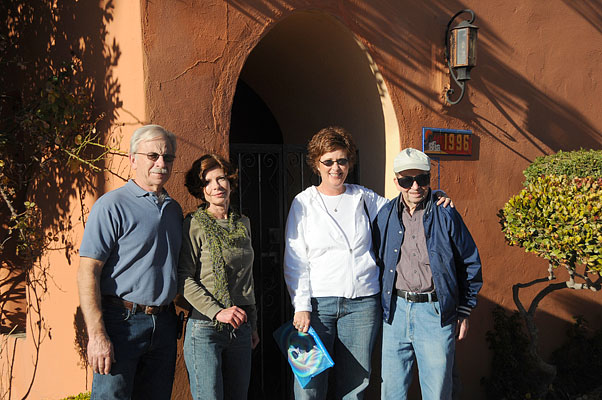 |
...Not to mention a setting for gringos to grin at the camera and say "cheesy." |
| White Sands National Monument Driving through the pass between the San Andres and Organ Mountains, Gary took us to White Sands National Monument, where we enjoyed what looked for all the world like a January snowscape.
|
CAUTION Science Lesson |
Gypsum is rarely found in the form of sand because it is water-soluble. Normally, rain would dissolve the gypsum and carry it to the sea. Since the Tularosa Basin has no outlet to the sea, rain that dissolves gypsum from the surrounding San Andres and Sacramento Mountains is trapped within the basin, and the rain either sinks into the ground or forms shallow pools which subsequently dry out and leave gypsum in a crystalline form, called selenite, on the surface. Unlike dunes made of quartz-based sand crystals, the gypsum does not readily convert the sun's energy into heat and thus can be walked upon safely with bare feet, even in the hottest summer months. In winter months, the sight of numerous children sledding down the dunes reinforced our illusion that we were in Michigan rather than the southwest desert in January. |
| Nancy, Uncle Hugh, and Cherie set off to climb one of the dunes before the sun sank in the west. | 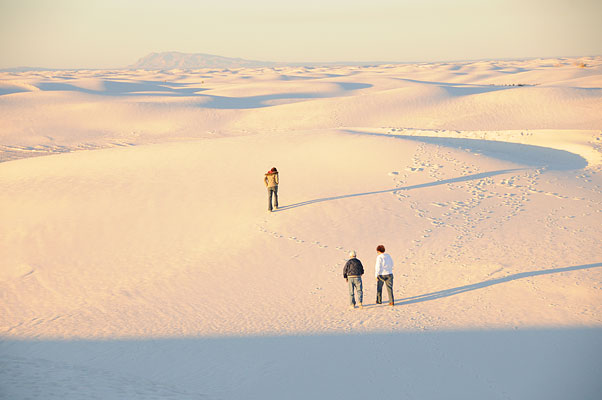 |
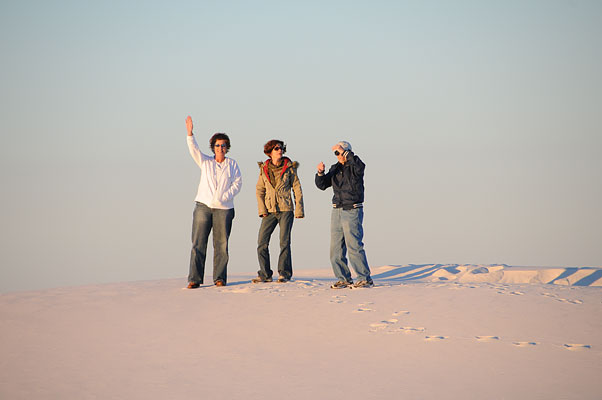 |
Upon reaching the top they celebrated like Admiral Byrd, flapping their arms for their adoring fans. |
| ...Where they were rewarded with views of dunes marching off into the sunset behind the San Andres Mountains. |  |
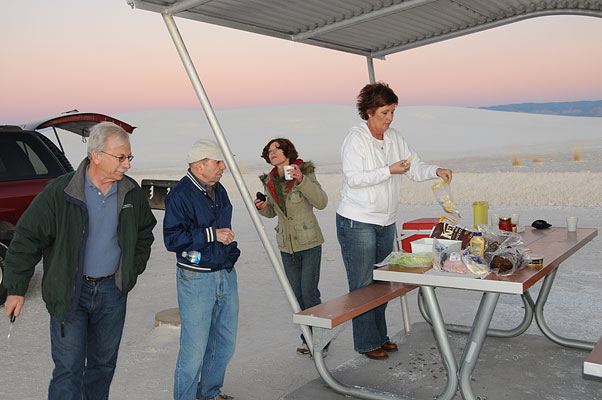 |
All that exertion after a full day of sightseeing ramped up our appetites, which we sated with, what else, "sand which is there" at the park. Once the sun went down, the temps plunged, and we would have gladly traded our grape juice (wink, wink, no alcohol in the park, ya know) for a steaming cup of hot chocolate. |
| Nancy and Cherie topped off the day with a toast to happy families, exotic locations, and good times. | 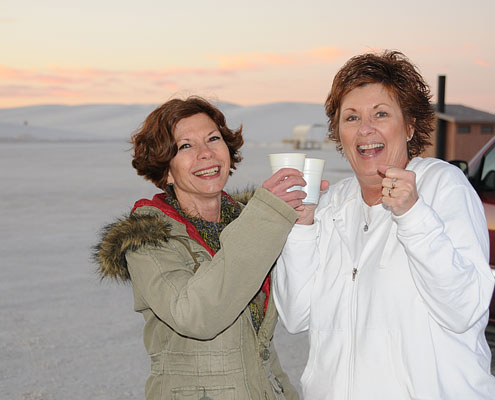
|